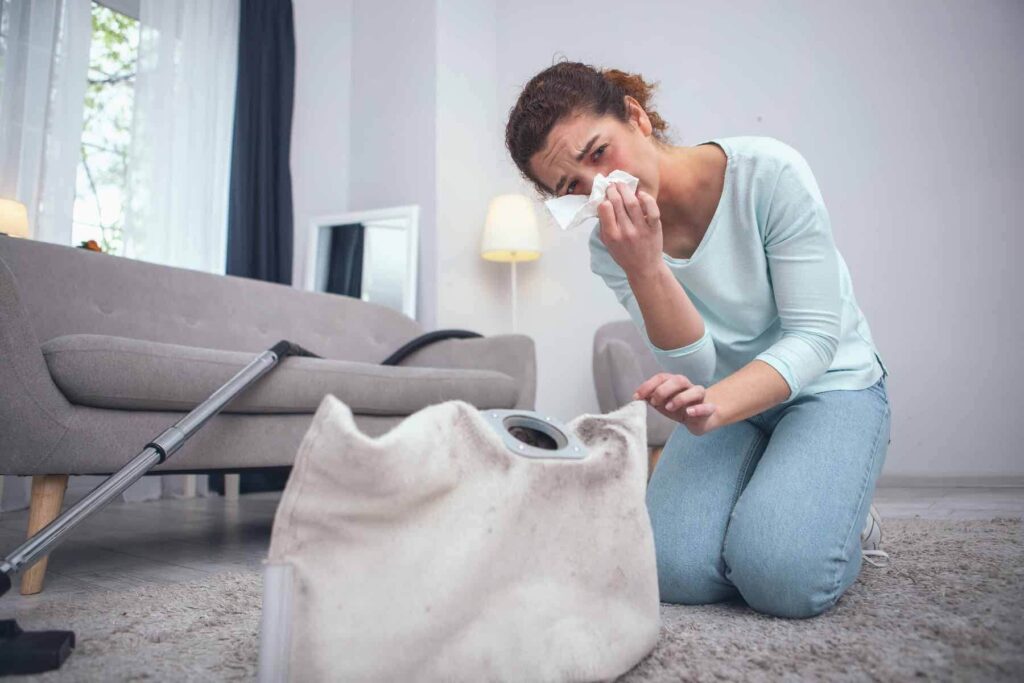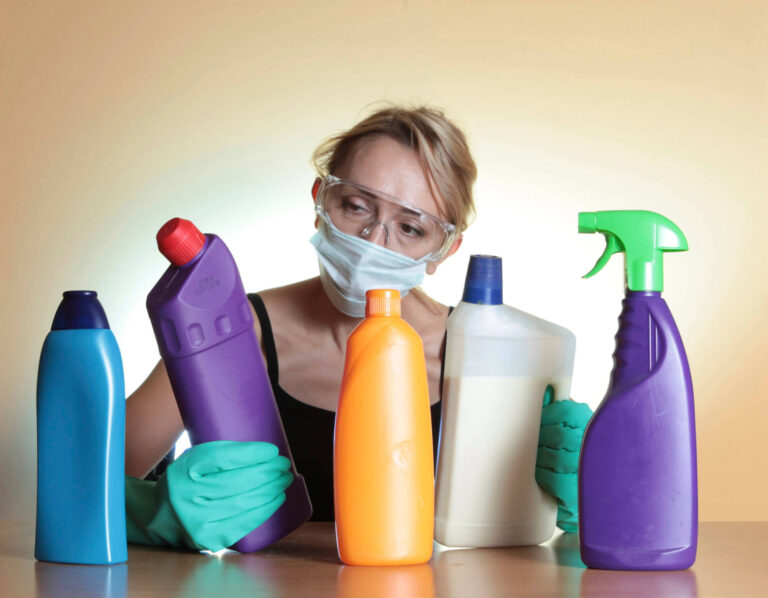
For many people, home is where we go to relax and feel comfortable. But for millions of allergy sufferers, home is also the source of misery. Indoor allergies caused by common household triggers like dust mites, pet dander, mold, and cockroaches make it difficult to find respite even within one’s own four walls.
Fortunately, a thorough cleaning plan targeted at removing allergens can dramatically reduce allergy symptoms for household members. Implementing simple cleaning habits and using the right tools goes a long way in making a home more allergy-friendly.
What Are Household Allergies?
Household allergies result from exposure to allergens commonly found inside homes that cause an overreaction of the immune system. When inhaled or contacting the skin, these allergens trigger antibody responses that release histamine and other chemicals in the body.
This leads to coughing, sneezing, nasal congestion, rashes, watery eyes, difficulty breathing, and other irritating symptoms. Household allergies can range from minor annoyances to severe and even life-threatening reactions like anaphylaxis.
Some of the most common household allergens are:
Dust Mites – Microscopic mites feed on flakes of dead skin and thrive in carpet, upholstered furniture, bedding, and stuffed toys. Their feces and decaying bodies contain proteins that cause allergic reactions.
Pet Dander – Skin flakes, saliva, and urine from cats, dogs, small mammals, birds, and other pets trigger allergies. Dander particles float easily through the air and stick to surfaces.
Mold – Mold grows readily in damp areas of homes. Spores are released into the air and can be inhaled. Mold exposure causes itchy eyes, runny nose, coughing, and difficulty breathing in those allergic.
Cockroaches – Roach droppings and shedded body parts contain proteins that are powerful allergens. Cockroach infestations spread these particles through the home.
Pollen – During certain seasons, pollen from trees, grasses, and weeds drifts inside through open windows and ventilation systems. Inhaling pollen grains triggers allergic reactions.
Dust – Ordinary house dust contains dust mite matter, pet dander, mold, and other allergens that have settled over time. Disturbing dust stirs allergens into the air.
A thorough cleaning routine helps remove these common allergens from the home to prevent or reduce allergic reactions.
How Cleaning Helps Prevent Household Allergies
Cleaning physically removes allergens like pollen, pet dander, mold spores, and dust mite matter rather than just letting them accumulate. Deep cleaning to sanitize areas where allergens lurk and thrive also helps reduce allergen concentrations long-term.
Some key ways that cleaning fights household allergies:
- Vacuuming lifts dust and dirt from floors and furniture which removes allergens trapped in dust bunnies and fibers before they become airborne. Use vacuums with HEPA filters to capture tiny particles.
- Dusting eliminates dust layer buildup on surfaces that can harbor allergens. Use microfiber cloths to trap and remove allergens.
- Washing bedding in hot water kills dust mites and washes away their feces and skin particles that trigger allergies.
- Cleaning tile, wood, and vinyl floors prevents buildup of pollen, pet dander, and other allergens that settle out of the air. Use damp mopping methods.
- Sanitizing countertops and tables eliminates traces of food that can attract roaches and provide habitat for mold growth when left out.
- Cleaning bathrooms removes mold and mildew that propagates in humid conditions and causes allergies when spores are dispersed into the air.
- Wiping down walls and baseboards cleans away dust and dirt buildup that gathers in less accessed areas but still contributes to poor indoor air quality.
Cleaning AC ducts and filters removes accumulated particulates so indoor air can circulate free of allergens.
With routine cleaning, the amount of allergens present in living spaces decreases dramatically. This reduces exposure and makes homes more livable for those sensitive to indoor allergens.
Effective Cleaning Tips to Fight Household Allergens
Certain cleaning techniques are particularly effective for removing and neutralizing common household allergens. Here are some handy tips:
Control Dust – Dust frequently with microfiber cloths and avoid fluffy feather dusters that just redistribute dust. For heavy dusting jobs, lightly mist surfaces and wipe clean while dust adheres to the mist. Clean ceiling fans and blinds routinely to remove accumulated dust.
Remove Pet Dander – Brush or bathe pets regularly to decrease shedding and dander buildup. Vacuum upholstery after pet activity or place washable covers on furniture. Use HEPA air purifiers to trap airborne pet dander. Change filters often.
Wash Bedding Weekly – Use the highest permitted water temperature and add baking soda or detergent designed to kill dust mites. For mattresses and pillows, use allergen-proof encasings to seal out dust mites and wash every few months.
Monitor Humidity Levels – Use dehumidifiers to keep indoor relative humidity below 50% to discourage dust mite and mold growth. Install bathroom fans and vent clothes dryers outdoors. Promptly fix any water leaks.
Seal Out Allergens – Caulk and weatherstrip gaps around windows, doors, and flooring to prevent pollen, dander, and pests from sneaking inside. Avoid open windows during peak pollen seasons.
Clean Flooring Thoroughly – For carpet, use vacuums with beater bars to loosen debris and HEPA filters to capture dust. Professionally steam clean carpeting and rugs every 6-12 months to kill dust mites. Use a damp mop for hard flooring.
Keep Clutter at Bay – Decluttering provides fewer places for dust and dander to collect. Clean items stored under beds, furniture, and in basements to eliminate forgotten allergen reservoirs.
Target Mold Prevention – Clean bathrooms, showers, and sinks frequently with anti-microbial cleaners to inhibit mold growth. Discard wet shower mats, sponges, or cleaning rags that can develop mold easily.
Install Ventilation – Vents that exchange indoor and outdoor air reduce the concentration of airborne allergens over time. Make sure AC and heating systems are properly maintained. Change filters every 1-3 months.
With diligent cleaning habits focused on common problem areas, allergy sufferers can better control their exposure to indoor allergens and feel more comfortable in their own homes.
Other Ways to Reduce Household Allergies
While cleaning tackles the root of indoor allergy problems, other approaches help strengthen defenses against household allergens:
- Keep a clean home environment year-round rather than intensive seasonal cleaning. Consistency is key.
- Have carpets and upholstery professionally cleaned 1-2 times per year to remove deeply embedded allergens.
- Wash sheets, pillowcases, mattress covers regularly in very hot water to control dust mites.
- Upgrade HVAC air filters to pleated HEPA models, which remove over 99% of allergens.
- Use high quality vacuum cleaners with sealed bodies, HEPA filtration, and allergen-trapping bags to optimize dust removal.
- Place pleated HEPA air purifiers in bedrooms and main living areas to continually filter allergens. Replace filters every 3-6 months.
- Use allergen-proof mattress and pillow encasings as an additional barrier against dust mites.
- Limit plush toys, carpeted cat towers, fabric curtains which collect dust and dander. Choose washable items.
- Test for specific allergies then get immunotherapy shots or sublingual drops to decrease sensitivity long-term.
- Install mold inhibiting bathroom fans and repair any moisture issues like leaks to deter mold growth.
- Consult a physician about daily allergy medications like antihistamines, decongestants, and nasal sprays for relief.
With some diligence, homes can be transformed from allergy zone into havens. A clean home makes enjoying time with family and pets comfortable and worry-free for everyone.
Start Improving Indoor Air Quality Today
Don’t let indoor allergies prevent you from fully enjoying your living space and furnishings. By identifying problematic allergens and using specialized cleaning techniques, allergen levels can be significantly lowered so all family members can breathe easier.
Implement a routine cleaning schedule focusing on common allergen hot spots. Maintain humidity levels, fix leaks promptly, install quality ventilation, and declutter to eliminate places where allergens multiply. Be diligent and persistent to transform your home into a clean refuge rather than a source of misery.
With the right cleaning strategies, resources, and products, you can take control over indoor allergies rather than just trying to manage symptoms. Enjoy cleaner air, less sneezing and wheezing, and improved health once you tackle lurking indoor allergens head-on.
Everclean Cleaning Services
At Everclean, we provide customized cleaning services to eliminate household allergens for a healthier home. Our deep cleaning, carpet cleaning, and upholstery cleaning remove lurking allergens so you can breathe easier. Contact us today to create an allergy-conscious cleaning plan!
Sources:
[1] https://aafa.org/allergies/prevent-allergies/control-indoor-allergens/
[2] https://www.mayoclinic.org/diseases-conditions/allergies/in-depth/allergy/art-20049365


